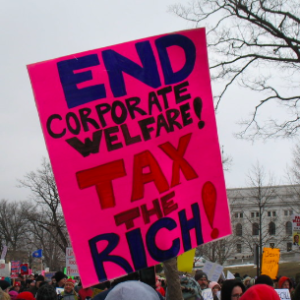According to Congressional Budget Office figures, the average household in the top one percent earns 120 times what the average poor household earns, but pays 2,000 times the taxes. Even after deductions, exemptions, write-offs, and income deferrals, the typical one-percenter paid 32 percent of his income (all sources combined) in 2018 versus 13 percent for the typical middle-class household and almost 0 percent for the typical poor household.
As Americans figure out the truth about who pays, politicians are shifting the goalposts. Elizabeth Warren shifted the conversation from the fraction of income the rich pay to the fraction of wealth. President Biden has upped the ante by talking about taxing unrealized capital gains.
This is unprecedented. The federal government has no constitutional authority to tax wealth, and neither accountants nor the law has ever considered unrealized gains as income. An unrealized gain is simply an investment “in process.” What shows up as a gain today can easily turn into a loss tomorrow. Ask anyone who invested in Bitcoin in March 2021 or gold in August 2011 or housing in 2007. An investment’s tale isn’t told until the investor cashes out. Unrealized gains aren’t gains. They are hypotheticals.
But watch out. Politicians are only partially interested in the rich. They are very interested in the middle class. In 2018, middle and upper-middle-class households, combined, earned double what the top one percent earned while being taxed at half the rate. Politicians see the middle classes as a largely untapped revenue source.
President Joe Biden says a tax on unrealized gains would apply only to billionaires. But once instituted, there would be nothing stopping politicians from applying it to everyone else. The median sale price of existing homes shot up 14 percent in the past year. If the government applied an unrealized capital gains tax to homeowners, the median homeowner would have been socked with a $7,000 tax bill. The average 401K or IRA saver saw around $13,000 in unrealized capital gains last year and, if those unrealized gains were taxed, would have had to pay an additional $2,000 in taxes.
Over a 40-year career, the typical four-year college graduate earns $1 million more than the typical worker with only a high school education. Should that $1 million be taxed on graduation day? Of course, the graduate wouldn’t have earned the money yet. But that simply makes it an unrealized gain. If the government can tax other investments before their gains materialize, why can’t it tax the graduate’s education investment before it materializes? The tax bill there, by the way, would be around $150,000.
Politicians see a coming fiscal storm, and they are desperate to find new revenue sources before it hits. The Congressional Budget Office estimates that by 2031 the federal debt will be $36 trillion. If this estimate is off by the same amount as the CBO’s past estimates, the debt will actually be closer to $80 trillion. That’s equivalent to running $5 trillion deficits for the next decade.
Federal spending is out of control, and a day of reckoning is coming. Politicians know it, they know they can’t stop it, and they know that raising taxes isn’t enough. They need new sources of tax revenue that haven’t existed before. Their first step is to institute new taxes on wealth and unrealized capital gains. Their next step will be to expand those taxes to the middle class.
In the meantime, politicians hope we’ll keep pointing fingers at the rich and so not notice who the real culprits are.

